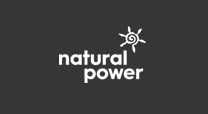What was the aim of the work?
We were appointed as the owner’s engineer to act on behalf of the project owner to oversee stakeholder and public engagement; provide interface management; oversee and co-ordinate the balance of plant (BOP), turbine supply agreements (TSA) and grid contracts and contractors; identify and mitigate risk to the programme and budget; monitor control and environmental issues; pre-commencement health and safety planning and the creation and implementation of the Control Plan to secure the commencement certificate.
What was the outcome?
Natural Power’s collaborative approach, combined with its advanced knowledge of health and safety principles, allowed us to deliver the project smoothly and to the satisfaction of the client and local stakeholders.
By working with local people and authorities and using local partners to help with establishing positive communications, the client was reassured that Natural Power could successfully work on the project.
What did Natural Power do to get this result?
The work that we did on the project was designed to reflect the location and the culture that we were working in. We engaged with local partners to ensure specialist knowledge and overcome any potential language barrier. We worked with Ecogain, who were the environmental clerk of works; Bureau Veritas, who were the Bas-P and KA; and Wind Sweden, who were the resident engineers.
Due to negative wind farm experiences in the region, the environmental department of the Länsstyrelsen (municipality) took a keen interest in BJV, so we had to build a relationship with them. Early in the project, they told us that they wanted to hold all dialogue and communication in Swedish. By engaging a prominent local partner, Ecogain, who specialised in the topics and were able to provide seamless communication and documentation in Swedish, we were able to work with Länsstyrelsen.
We also built relationships with local people. We liaised with Sami people, who are indigenous people in the area and are protected by rights and responsibilities, so we communicated with and supported them. Their traditional heritage is heavily invested in reindeer grazing and herding, and the site area is subject to reindeer movements. We also worked with people in the two local villages that are close to the site. We used their community halls to hold monthly meetings and public presentations to keep them updated with project developments. BJV also set up a website to post information about the project, gather feedback, and give us a place to post routine construction updates.

Client Feedback
BJV is our first involvement with Natural Power, and we are very pleased with the quality of the service provided. We appreciate the availability of the team as well as their reactivity and the quality of their answers. We are very happy with the way they manage the construction of our wind project so far; they succeed in coordinating all the various workflows in a smooth and efficient way.”
Project stats
21
The electricity from 21 of the 33 turbines is sold to Google via a private corporate purchase agreement based on merchant prices of the electricity.
39%
The annual electricity output will land between 500 and 600 GWh with a capacity factor ranging between 32% and 39%.






